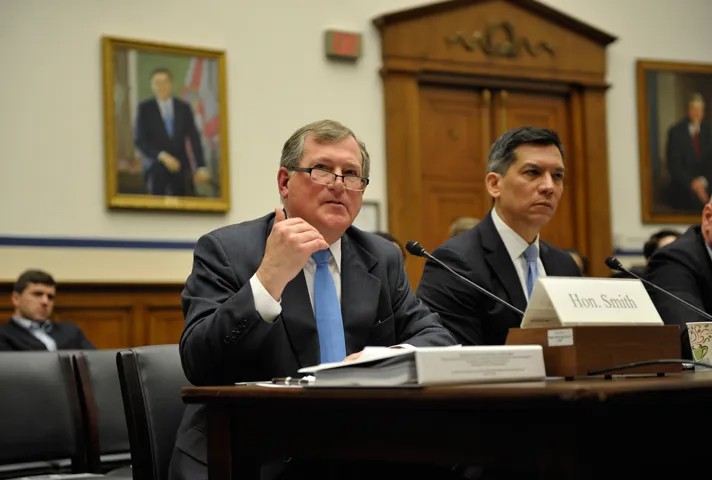The federal Judiciary is actively trimming costs for courthouses and office space, and is working to ensure that recently appropriated funds for eight courthouse construction projects will be spent efficiently, a House subcommittee was told by the head of the Judiciary’s Space and Facilities Committee.
“We have implemented an unprecedented space reduction plan … and we have established procedures to ensure that construction projects are prudently developed and implemented,” said Judge D. Brooks Smith, chair of the Judicial Conference’s Space and Facilities Committee. “In short, as the federal Judiciary performs its paramount constitutional duties, we are doing so by being good stewards of the resources Congress has provided.”
Judge Smith addressed a subcommittee of the House Transportation and Infrastructure Committee during a March 1 hearing on “Saving Taxpayer Dollars by Reducing Federal Office Space Costs.” In written and oral testimony, he detailed the Judiciary’s plans for cutting existing space, and for keeping new construction projects on budget.

Judge D. Brooks Smith tells a House panel how the Judiciary is curbing real estate costs. Norman Dong, public buildings commissioner for the General Services Administration, is at right.
The Judiciary already has accomplished more than half of its five-year target for reducing building space 3 percent by September 2018. A total of 445,796 square feet of space has been returned to the General Services Administration (GSA), accounting for $11.8 million in new annual rent savings. “Space reduction projects currently underway will yield another 355,137 (square feet), equal to 40 percent of the national goal,” Judge Smith testified.
In addition to space reduction projects, a host of policies enacted in recent years is limiting expansion needs. Courtroom sharing is now required in all new construction projects for senior, magistrate and bankruptcy judges. And circuits must follow a “no net new” policy, offsetting space increases with an equivalent space cut elsewhere.
Despite those efficiencies, Judge Smith cautioned, “we recognize that there are courts that for too long have been housed in aging facilities that have serious space, security and operational deficiencies.”
In December 2015, Congress authorized a lump-sum appropriation of $948 million that will pay for eight courthouse construction projects, in Nashville, Tennessee; Toledo, Ohio; Charlotte, North Carolina; Des Moines, Iowa; Greenville, South Carolina; Anniston, Alabama; Savannah, Georgia; and San Antonio, Texas. A ninth project, in Harrisburg, Pennsylvania, received partial funding. Most of the courts had been waiting 15 years or more for construction funding.
GSA and the Administrative Office of the U.S. Courts are developing a spending plan, and Judge Smith said the courts, AO and the GSA are collaborating to ensure each project stays within budget but also provides essential improvements.
“We in the Third Branch are appreciative of the commitment Congress has made to jump-starting the courthouse construction program,” Smith told the panel. “In the spirit of good stewardship, we will be working hard to deliver results that will meet all of the individual courts’ needs. We will do so in an effective, cost-efficient manner befitting the trust that Congress has placed in us by appropriating these needed funds.”
Subscribe to News Updates
Subscribe to be notified when the news section is updated.
